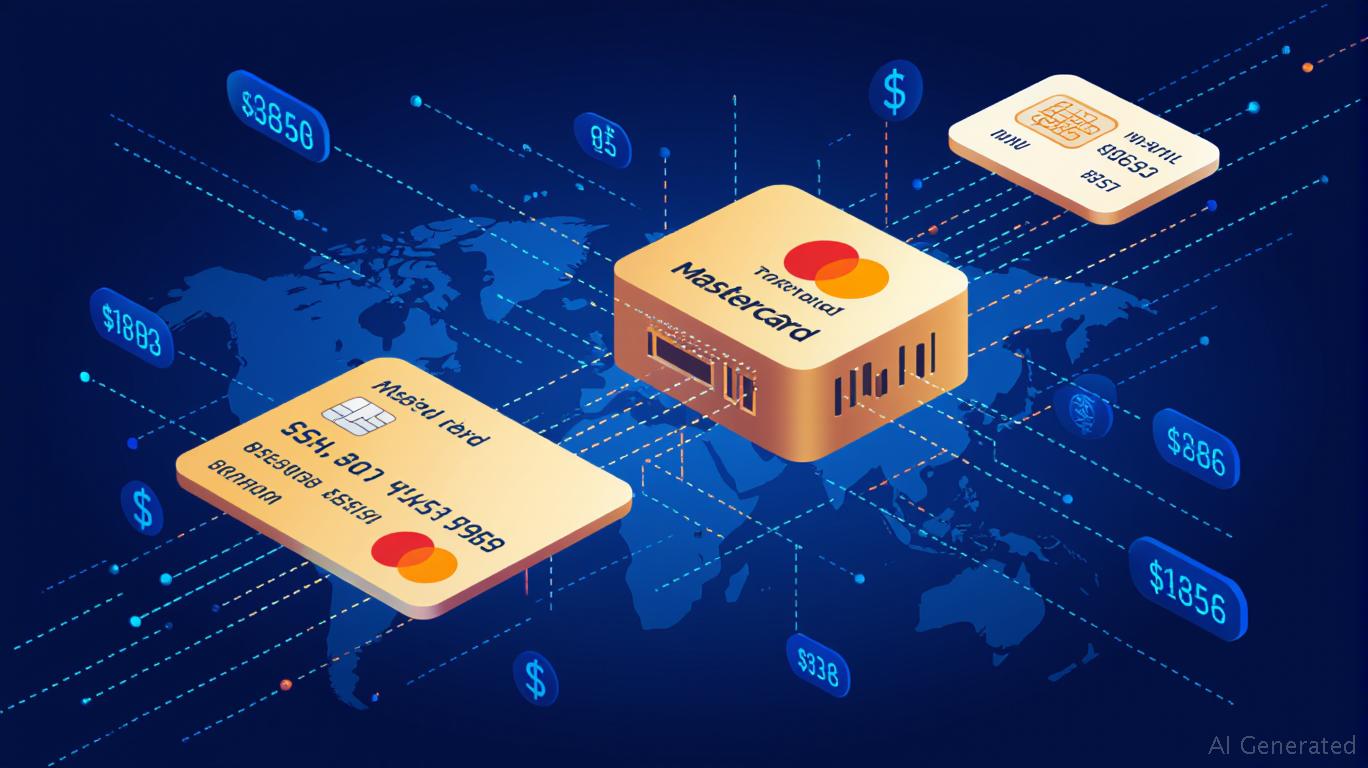AInvest Newsletter
Daily stocks & crypto headlines, free to your inbox
Mastercard (NYSE: MA) is positioning itself as the preeminent player in the evolving payments landscape, leveraging its investments in tokenization, digital enablement, and strategic collaborations to build a defensible moat against fintech disruptors. Supported by robust Q2 2025 earnings growth and a favorable Zacks ranking, the company's multi-pronged strategy aims to future-proof its leadership in a world where programmable payments and seamless digital transactions are becoming the norm.

Mastercard's Q2 2025 results underscore the strength of its core offerings. Analysts project a 12.8% year-over-year jump in EPS to $4.05, driven by 14.2% revenue growth in Q1 2025 to $7.3 billion. A key driver is its Value-Added Services (VAS), which include tokenization and cybersecurity solutions. These services have grown at a blistering 16-17.7% annually, outpacing overall revenue growth. Tokenization—replacing sensitive payment data with unique digital tokens—remains central to Mastercard's vision of a secure, cardless future.
The Zacks Rank #2 (Buy) reflects investor and analyst confidence, with a mean price target of $629.15 (11.6% upside) and 25 out of 36 analysts recommending a “Strong Buy.” This momentum is amplified by Mastercard's $2.4 billion operating cash flow in Q1, which funds aggressive buybacks ($2.5 billion) and dividends ($694 million), signaling enduring financial health.
Mastercard's partnerships with tech firms like
and illustrate its commitment to embedding its services into emerging digital ecosystems. For example:Such alliances not only expand Mastercard's reach but also deepen its ties to the infrastructure underpinning tomorrow's digital economy.
Mastercard's Agent Pay and One Credential initiatives exemplify its push into programmable payments, where transactions can be customized, automated, and secured at scale.
- Agent Pay: This system uses AI to manage recurring payments or cross-border transactions. For instance, corporate clients can automate supplier payments using virtual card tokens, while consumers might let AI curate purchases (e.g., birthday gifts) via secure, tokenized transactions.
- One Credential: Targeting Gen Z and digital natives, this tool lets users program payment preferences—such as routing large purchases to credit cards or setting spending limits—via a single digital interface. Partnerships with
These programs directly counter fintech competitors like Revolut or Klarna, which focus on user-centric, programmable finance. By combining tokenization with AI, Mastercard is not just adapting to disruption—it's setting the standard.
Fintechs thrive on simplicity and customization, but Mastercard's ecosystem advantages are hard to replicate:
1. Security Leadership: Its decades of fraud detection expertise and biometric innovations (e.g., Bangladesh's fingerprint card) deter rivals.
2. Network Effects: With 3.5 billion cards issued and partnerships spanning cloud providers to crypto platforms (e.g., Chainlink), Mastercard's scale deters fragmentation.
3. Regulatory Agility: Compliance with evolving standards (e.g., ISO 20022) and collaboration with central banks on CBDCs position it as a trusted partner in an era of regulatory flux.
Mastercard's forward P/E of 35.24 is a premium, but its growth trajectory justifies it. With 9.5% 2025 EPS growth and 16.6% in 2026, the stock's Zacks Rank #2 and analyst consensus suggest further upside. The $629.15 price target implies a 10%+ return from current levels, even after recent gains.
Risks: Regulatory scrutiny, cybersecurity breaches, and slower adoption of programmable payments could test the moat. However, Mastercard's diversified revenue streams and innovation pace mitigate these risks.
Mastercard is not merely a payments processor—it's a tech-driven ecosystem builder. Its investments in tokenization, AI-powered programmable payments, and strategic partnerships form a scalable moat against fintechs. With strong earnings momentum and a Zacks Rank #2, MA is a compelling buy for investors seeking exposure to the future of finance.
Action: Accumulate Mastercard on dips, targeting the $550-$575 range. Hold for 12-18 months to capture EPS growth and ecosystem expansion.
Daily stocks & crypto headlines, free to your inbox
Comments
No comments yet